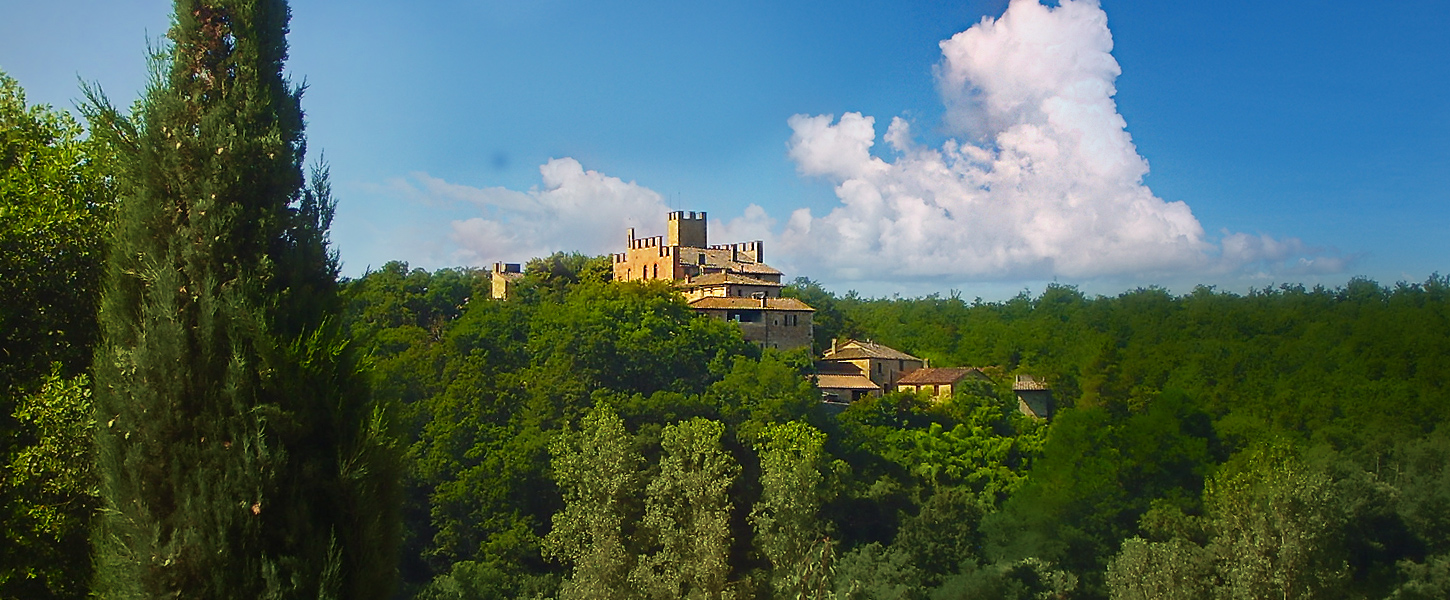In addition to the famous cities like Siena and Florence, Montalto is surrounded by many interesting smaller towns, such as:
Montalcino, home of Brunello wine, in whose castle the Sienese government took refuge after the Florentines conquered Siena in the 16th century;
Pienza, the town designed in Renaissance style by Pope Pius II, with the houses on its square artfully proportioned to make the space seem larger;
Montepulciano with its steep medieval alleys;
Monteriggioni with its crowning circle of walls;
Arezzo, which houses fine frescoes by Piero della Francesca;
Cortona, beloved by Frances Mayes who celebrated its life in Under the Tuscan Sun and other books
Volterra, an Etruscan town still encircled by walls and home of an important industry of alabaster artifacts. Its museums hold lovely collections of alabaster artisanry and also a beautiful painting by Bronzino; an entirely frescoed baroque chapel is rarely open to visit.
…and and there are many other beautiful towns in Tuscany — too numerous to mention.
Even the smallest villages hide treasures you won't find in guide books, there waiting for you to discover: the church in Badia a Ruoti, for example, a very short distance from Montalto, has a dazzling 14th-century altarpiece; and in Pogi near Bucine there is a medieval bridge on ancient Roman foundations that is still in use today, identified only by its single high arch and ancient stones.
 You will not tire of exploring back roads, and each excursion will bring some new discovery even if you come back year after year. There is always something else to see!
In your house or apartment you will find a booklet with some suggestions about the most interesting art towns and monuments in this area of Tuscany. A selection of guide books, sight-seeing brochures and magazines offering information on the area is also available in our office.
You will not tire of exploring back roads, and each excursion will bring some new discovery even if you come back year after year. There is always something else to see!
In your house or apartment you will find a booklet with some suggestions about the most interesting art towns and monuments in this area of Tuscany. A selection of guide books, sight-seeing brochures and magazines offering information on the area is also available in our office.










